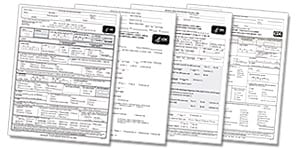What to know
Active Bacterial Core surveillance (ABCs) cases must meet the case definition to be considered part of the surveillance system. Standardized case report forms are available and should be used on all identified cases.

Data collection
Case report forms
- Active Bacterial Core surveillance Case Report Form [2 pages] Updated June 2023
- Neonatal Sepsis Surveillance Form [1 MB, 3 pages] Updated June 2023
- Neonatal Infection Expanded Tracking Form [1 MB, 4 pages] Updated June 2023
- Invasive Pneumococcal Disease in Children and Adults [1 page] Updated June 2023
Collect case information
ABCs personnel complete a standardized case report form on all identified cases.
This form contains questions on
- Basic demographics
- Underlying conditions
- Vaccinations
- Risk factors for infection
Surveillance personnel obtain some of the data of interest from the microbiology laboratories. However, all essential data for describing the population-based epidemiology of these diseases may not be available in many microbiology laboratories.
ABCs sites collect patient medical records data to complement laboratory information. Sites obtain medical records data through the cooperation of on-site hospital personnel (e.g., infection preventionists). They can also obtain these data through medical record review by county health department personnel or ABCs personnel.
Surveillance areas regularly assess the completeness of information collected for each case. ABCs sites revise the data collection methods to correct if any of the core variables are frequently incomplete.
Collect sterile site isolates
ABCs sites collect sterile site isolates for each identified case of group A Streptococcus, Haemophilus influenzae, Neisseria meningitidis, and Streptococcus pneumoniae. Some sites collect group B Streptococcus isolates. Sites batch isolates and send them to CDC for further testing and characterization.
